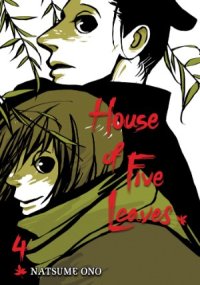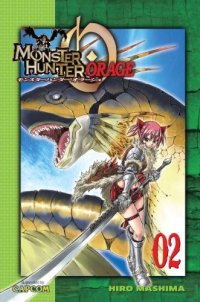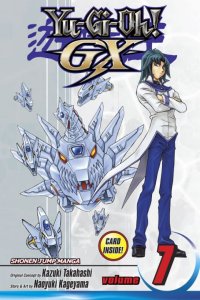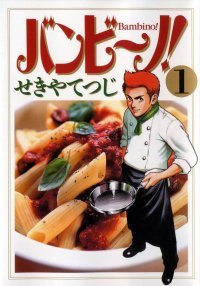RIGHT TURN ONLY!!
Tales of the Monster Hunter
by Carlo Santos,

Yes, I see that fans all across America still want a proper, translated copy of Hetalia Vol. 3 in their hands. But surely we don't want its publication being handled by that guy.
HOUSE OF FIVE LEAVES

Vol. 4
(by Natsume Ono, Viz Media, $12.99)
FROM THE BACK COVER:
"With Masa having joined the crew, the fragile bonds between the members of the Five Leaves begin to change. Further changes are promised by the arrival of Ginta, a self-styled 'negotiator' who learns of the existence of the Five Leaves and offers them his services. Meanwhile, the pressure on Yaichi increases as the members of his old gang continue to track him down. Burdened by the weight of his hidden past, his impervious façade begins to crack."
EVIDENCE FOR:
"You think you know a guy..." It's a familiar saying, and it's how House of Five Leaves stays in business—by keeping us guessing about the true nature of its characters. The arrival of sneaky, money-minded Ginta adds a new wrinkle to the series as a whole: is he really just there to run money between victims and kidnappers? Or is he out to disrupt the entire system? The presence of the rival "Night Crows" organization—a more violent version of the Five Leaves—also adds questions about where Ginta's allegiances lie, making this whole volume two hundred pages of mind games and suspense. Occasional flashbacks involving Yaichi and Masa also remind us that the main characters still have secrets up their sleeve, and an action-packed interlude shows that some of those secrets are bloody ones. As usual, Natsume Ono's artwork gives the series a distinctive look, with her loose, sketchy linework evoking the style of classic gekiga but with a more gentle approach. The panel layouts also move smoothly from scene to scene, with lots of long rectangles and striking close-ups for an artsy, impressionistic touch.
EVIDENCE AGAINST:
"You think you know a guy..." and then the series spends so long trying to show how "unknowable" he is that everyone else gets shafted. This volume ends up being The Ginta, Masa and Yaichi Show more than anything, and if it isn't busy wallowing in Ginta's mournful mumblings about his past, it's digging deep into Masa or Yaichi's inner pain. This kind of samurai shoegazing is what keeps the story from even taking off before Page 40 or so, and the truly dramatic twists don't come until about the last quarter of the book. When a story takes that long to devlop—and keeps getting derailed by vague conversations that trail off without any point—it's just too easy to lose interest. The overemphasis on Ginta also detracts from the subplots that would have made this storyline complete, like the involvement of the Night Crows and the former gang members who are after Yaichi. Meanwhile, Ono's unpolished approach to character design adds a layer of difficulty in trying to figure out who is speaking or taking action in some of the scenes.
FINAL VERDICT:
This should have been a good, volume-long story arc with an intriguing new character—but the story detours and lack of focus make it a C+ instead.
MARDOCK SCRAMBLE

Vol. 1
(by Tow Ubukata and Yoshitoki Oima, Kodansha Comics, $10.99)
FROM THE BACK COVER:
"'I'd rather be dead.' Rune Balot was a lost girl with nothing to live for, when a man named Shell took her in and cared for her ... until he tried to murder her. Standing at the precipice of death, Rune is saved by Dr. Easter, a private investigator, who uses an experimental procedure known as 'Mardock Scramble 09.' The procedure grants Balot extraordinary abilities and now she must decide whether to use her new power to help Dr. Easter bring Shell to justice, or if she even has the will to keep living a life that's been broken so badly."
EVIDENCE FOR:
Mardock Scramble takes the grit and grime of modern city life, throws on a shiny layer of sci-fi surrealism, and as a result rises above all the other "girl against the world" types of action series out there. First there's the very nature of Balot's powers: her rebuilt body contains sensors that allow her to "know" the world around her and control any electronic object, which is way cooler than just having enhanced physical abilities or a gun barrel in her forearm. Then there's the stylish way in which she uses her powers: whenever Shell's associates try to attack Balot, her manipulation of the world around her—plus the help of a pint-sized friend who literally transforms into a bio-mechanical power suit—results in acrobatic, heart-pounding battles where dynamic angles and exaggerated perspective provide a treat for the eyes. It also doesn't hurt that the artwork is clean and economical, focusing on the flow of the action above all else in these fight scenes. Meanwhile, other mysteries set up plenty of intrigue for future volumes: What is Shell trying to accomplish with these killings? And how many more bad guys are coming for Balot? Wouldn't we all like to know.
EVIDENCE AGAINST:
Actually, what I'd like to know is where writers like Tow Ubukata get off with so much "telling" and not enough "showing." Mardock Scramble kicks off with all these dramatic, action-packed situations, but somehow assumes that readers will care about the characters simply because they're battling each other. But why is Balot so despondent? How did she develop that ill-fated relationship with Shell? Her sordid past is briefly mentioned, but without a proper flashback scene, there's no emotional grounding: we're just told that Balot is upset with Shell and with herself, and must blindly accept that. The story also rings hollow on the science side, as it's never explained how Dr. Easter came into possession of his insanely cool technology, or how he has a partner whose very existence defies the laws of physics. In a world with a semi-realistic city setting, having wild, fantasy technology just doesn't click (although Ghost in the Shell kind of gets away with it). Yoshitoki Oima's art can also be lazy at times, skimping on backgrounds and screentones and assuming that pure lineart will speak for itself.
FINAL VERDICT:
There are lots of gaps in the story so far, but there's just a sheer coolness factor—the slick superpowers and fantastic fight scenes—that elevate this to a B+.
MONSTER HUNTER ORAGE

Vol. 2
(by Hiro Mashima, Kodansha Comics, $10.99)
FROM THE BACK COVER:
"Shiki, Ailee, and Sakya are on a journey seeking a legendary weapon craftsman, but in order to reach him, they need a boat. When the only solution involves hunting down a terrifying sea monster, Ailee must face the demons of her past and learn to believe in the friends at her side. Experience the thrill of the hunt in this second volume of the manga based on the hit Monster Hunter video game series!"
EVIDENCE FOR:
Who's up for a little marine adventure? Hiro Mashima's flair for exotic locales is on full display in Monster Hunter Orage, with the seashore being his chosen subject this time. Even in plain black and white, Mashima's detailed illustrations evoke a world of sandy beaches, clear blue skies, and the distinctive sea breeze. That sensory thrill becomes even more exciting when Shiki and friends engage in combat against a roaming sea monster, with Ocean Waves and sea spray adding a bit of flavor to the usual barrage of sword-slashing and projectile explosions that are part of any monster battle. In between these gorgeous landscapes (not only the ocean, but cities as well) and dazzling artwork, Ailee also gets her back-story filled out. We finally learn why she doesn't trust friends easily, and see how her character has grown after a troubling incident from her youth. There's even a little twist at the end of the battle that cleverly links Ailee's past to her present. And throughout all this, Mashima's creativity never lets up, as he devises new characters and new worlds at a remarkable pace.
EVIDENCE AGAINST:
At some point, just making up lots of characters and pushing the main cast through gorgeous landscapes stops being an effective strategy. Sure, it works in video games where interactivity is also an element, but in manga, this super-straightforward plot offers little else to the reader. Even a brief mention of Shiki's grudge-holding rival is just mindless patter—"Here's what the bad guy is up to!"—and is in fact even shallower than how he's handled in Volume 1. Ailee's flashback about her past does add a bit of depth to story, but what about the other characters? The other member of the party, Sakya, is apparently no longer worth talking about because she got all the attention when she was introduced earlier. Meanwhile, Shiki has basically evolved from being a guy who yells a lot to ... a guy who still yells a lot. If this shoddy, imbalanced treatment is what the main characters get, then you can just imagine how things are for the supporting cast—they may have wild and wacky traits at first glance, but have no compelling stories to tell. How very video game-ish.
FINAL VERDICT:
The sense of adventure and discovery make it fun, and Ailee's story has value as well, but predictable epic-quest tropes earn this volume a C.
TALES OF THE ABYSS: ASCH THE BLOODY

Vol. 1
(by Rin Nijyo and Hana Saitō, original story by Namco Bandai Games Inc., Bandai, $10.99)
FROM THE BACK COVER:
"Asch is the lost prince of a country torn asunder by prophecy. Cloned and replaced by a new prince, Asch finds himself amongst the ranks of the God-Generals, fighting to destroy the very prophecy for peace that his clone clone will fulfill.
This manga side-story is based on the Tales of the Abyss anime series from Sunrise (Code Geass, Mobile Suit Gundam) and video role-playing game from Namco Bandai Games Inc.!
War, magic and science clash and Asch the Bloody stands at the heart of the conflict!"
EVIDENCE FOR:
They say that villains are more interesting than heroes, and Asch the Bloody holds true to that with its internally conflicted protagonist. Not only does Asch fly into entertaining fits of rage whenever he sees his airheaded, wide-eyed clone Luke trying to be the hero, but his mind is also caught up in a deeper struggle to understand the intentions of those around him. It's one thing to see a warrior trying to fight destiny—but when he knows exactly what that destiny is, and knows the sacrifices that were made to change it, and has to watch as the resulting carnage erupts around him ... that's a level of drama that could never happen in the case of a purely innocent boy hero. And since Asch is traveling all over the fantasy world (as opposed to just sitting in some evil lair), the story still carries the most appealing elements of an RPG: mysterious realms, hot-blooded swordfights, and eye-catching manifestations of magic. The characters' unique, intricately designed costumes also add to the strong visual impression this series makes.
EVIDENCE AGAINST:
For a side story that's supposed to be true to the original, this is a remarkably incomprehensible mess. But one look at the authors' notes in the back explains it: this is nothing more than a series of vignettes based on "What was Asch doing when various events in the game happened?" In other words, it's an attempt at elevating a side character to the level of protagonist—and then realizing that he doesn't have enough depth to be anything other than a side character. Every scene involves Asch either fuming about the existence of his inferior clone, or fighting said clone, or wailing about the nature of prophecies and destiny. This gets old by about the third chapter or so ... and there are seven chapters in Volume 1. And since the story is being told mainly from Asch's viewpoint, a lot of the exposition that clarified things in the original Tales of the Abyss is skipped over here, making it all but incomprehensible to non-fans. Everyone's just running around, yelling important names, getting into cluttered swordfights, and wearing ridiculous outfits. Between that and the bland action artwork, it's another RPG adaptation that falls flat on its face.
FINAL VERDICT:
Only recommendable to those familiar with the game or the anime, and even then it depends on one's affection for this particular character. Giving it a D is probably generous.
YU-GI-OH! GX

Vol. 7
(by Naoyuki Kageyama, original concept by Kazuki Takahashi, Viz Media, $9.99)
FROM THE BACK COVER:
"Years after Yugi's legendary battles, the game is so popular that special institutions dedicated to the art of the Duel have sprung up all over the world. Join Jaden Yuki and his pals at the Academy for the adventures of the next generation of Yu-Gi-Oh!
James 'Crocodile' Cook, one of the four Duelists from America, eagerly challenges Atticus Rhodes to a Duel. Elsewhere, Jaden and Chazz unlock more secrets of their spirit cards, Winged Kuriboh and Darkness Dragon. But their confrontation could lead to a Shadow Game that only one Duelist may survive!"
EVIDENCE FOR:
Collectible card gaming may be a sedentary pursuit in real life, but Yu-Gi-Oh! GX still finds ways to make it exciting on the printed page. Bursts of glowing energy and heavily speedlined backgrounds transform even the most basic maneuvers like "adding extra attack points" into a delight for the eyes. Naoyuki Kageyama's artistic talents don't just stop at special effects, either: the variety of monsters summoned by the players emerge as awe-inspiring, larger-than-life entities in the manga. What other series boasts a roster of creatures that includes reptiles, dragons, ice spirits, superheroes, and even personified military weapons? Naturally, the actual duels are also just as varied and thrilling as the individual cards, with different play styles based on their decks (Defensive countermoves or pure offensive power? Your choice!) and the "tag duel" format introducing the element of teamwork. "Hey, don't sacrifice my monsters" suddenly becomes a legitimate issue when it's two-on-two battle. This kind of complexity and strategizing in the Academy's latest showdown proves that card duels can, indeed, be a worthy intellectual challenge.
EVIDENCE AGAINST:
Come on, the only real intellectual challenge here is trying to remember the numerical stats and all the fancy effects that the cards have. Despite Yu-Gi-Oh! GX's best attempts to make card-battling look fun, the very nature of the game still results in too much expository dialogue about how each attack works. How exciting can it be to watch combatants narrate their moves in addition to seeing it happen on the page? This kind of verbal spillage also bogs down the pace of each duel (a typical complaint of just about every Yu-Gi-Oh! manga, to be honest), as well as drawing attention away from the awesome monsters and the players' infectious Fighting Spirit. Worst of all, the technical obsessive-compulsiveness of each battle leaves no room for the intriguing behind-the-scenes subplot, where certain higher-ups are playing the kids as pawns in a far deadlier game. The artwork is similarly empty and disappointing: the monsters and magic might look cool, but a lot of basics like decent character design, believable backgrounds, and simply being consistent are clearly out of Kageyama's artistic reach.
FINAL VERDICT:
The duels themselves are interesting enough, but the overall clunky format and lack of a legitimate storyline keep this at a C level.

BAMBINO!

Vol. 1
(by Sekiya Tetsuji, Shogakukan, Price)
FROM THE BACK COVER:
"Shogo Ban is a college student and novice Italian chef who joins a popular trattoria in Roppongi as an assistant. But what he finds there, amid the gleaming floors and kitchen countertops, is a team where everyone is sharpening their knives for the battlefield!"
EVIDENCE FOR:
Cool, an Italian-cuisine manga for people who haven't been suckered into the cult of Natsume Ono! Bambino! reveals the restaurant buisness for what it really is: a cutthroat, do-or-die environment where speed, accuracy, and thinking three dishes ahead are absolutely essential. (And nobody cares whether the waiters wear glasses or not.) Even the first volume alone explodes with nonstop action, as Shogo struggles to perform basic culinary tasks at professional-level speed. The sharp angles, dynamic layouts, and dramatic gestures of the characters prove that even the simple act of cooking can be as eye-catching as a fistfight or a road race. Throw in the fancy Italian words, and dozens of dishes being prepared simultaneously, and the sheer information overload makes you feel the chaos going through Shogo's brain. But workplace obstacles are nothing compared to the personal challenges Shogo must face: trying to win the respect of his teammates (who expect him to be gone within the week), surviving a finger-slicing accident, and even making a rookie mistake that ruins an entire pot of broth. It's in dealing with other characters—and dealing with himself—that we get to see just how Shogo's personality really grows.
EVIDENCE AGAINST:
Is it bad if things start looking repetitive by Volume 1? Because as soon as Shogo gets himself settled in as a chef-in-training, the story immediately switches to episodic day-by-day mode. Every 20 pages we find out the latest screw-up that he made, and his earnest struggle to fix the problem—a pattern that already repeats itself too often in the opening arc. Of course, the situation changes each time, but it's hard to see evidence of Shogo "leveling up" his character; his progress is more like a flat, linear model instead of an upward climb to culinary greatness. Just imagine how much more exciting the series would be if he were actually building upon his skill set. Shogo's personality as the instinct-driven, gung-ho type also makes him totally predictable—a carbon copy of many other young male protagonists in manga, except this time as a restaurant employee. Readers may also find the artwork monotonous at times, because aside from the uptempo action scenes, it's the same old kitchen backdrop being used over and over while the characters fling their pots and pans around. Not exactly the most stimulating experience.
FINAL VERDICT:
The brisk pacing and action-packed visuals add excitement to this cooking-themed workplace manga. Now if only the main character would find more interesting things to do around the kitchen.

It's the manga-about-manga everyone's talking about: Bakuman! Although I already offered my opinion on it last time, here's a fellow reader, Avery Lewis, who wants to share his thoughts on the latest volume's ups and downs. Remember, anything I've reviewed in the past is also fair game for your own Reader's Choice review—whether you agree or disagree!
BAKUMAN

Vol. 6
(by Tsugumi Ohba and Takeshi Obata, Viz Media, $9.99)
This installment finally explores the drawbacks to creating manga while trying to maintain a normal life.
However, the main characters of Moritaka and Akito are anything but normal, especially the former. They're incredibly motivated, to a point that truly starts to feel unrealistic. The two seem to rarely get out and actually enjoy life. It's good to be motivated, but they are bordering on obsessed, if they have not already crossed such a line. This, however, can be overlooked in lieu of the other aspects of the story.
Plotwise, in volume six, if it was not obvious from the preview in volume five, Moritaka basically collapses from work overload. He is then rushed to the hospital and finds out he has to have surgery. To make matters worse, the editor has decided to put his and Akito's manga, Detective Trap, on hiatus until they graduate high school.
Whereas the cast in previous volumes have only given glimpses at Miho, this volume finally brings her into contact again with some of the other characters, most notably Moritaka. Her relationship with Moritaka continues to feel otherworldly, yet this volume gives it a more relatable aspect by showing how the two interact with each other. As always, Akito and Kaya (not just their relationship) are pushed to the backburner by Moritaka and Miho.
At this point, the love aspect of the story seems to be on the backburner. Again, the character interactions and development are what really shine in Bakuman, and this volume sheds more light on some of the characters that have only had a couple panels per volume in the past.
A lot of characters seem to break their previous personalities in this volume, specifically Aoki, Fukuda, and Nakai. However, it seems that part of these personality changes, at least for the last one mentioned, are due to the stress of creating manga, so it is somewhat understandable. Almost all of the previously introduced characters gather in this volume as a huge source of drama and tension.
The art continues to shine in this volume. The backgrounds are not constantly forgotten as happens in other series. The characters' expressions also show a wide array of emotions.
Bakuman Volume 6, despite some trouble it may have with depicting real life, is a great read. Unlike other manga, its pages are actually filled with substance rather than big pictures and sound effects. It is definitely worth the money in comparison with other manga, as it lasts almost three times longer due to the walls of text on each page. The characters are all likeable, and, aside from having a few unstable personality designs that are highlighted in this volume, they all add to the drama of the big picture of the manga—Moritaka and Akito achieving their goals. Huge, intense battles are not needed to satisfy a craving for an interesting and enjoyable read in this case—a great story and an even greater cast will suffice just fine.
Is there a hidden gem of manga you'd like to reveal to the world? Is there a piece of garbage that deserves to be bashed in public? Or is there a title that didn't get a fair grade here, and you want to set the record straight?
Now's YOUR chance to be the reviewer! Write a review of about 300-400 words (a little more or less is fine) and include:
- your name.
- Title of manga (and volume no., if applicable)
- Author/Artist
- Publisher
- Briefly describe the story, then explain why this manga is great, terrible, or in between. Be objective, but also be entertaining.
Then send it in to rtoreaders (at) gmail (dot) com (plain text format preferred). One review will be selected out of all the submissions and will be published in the next column. All types of manga and manga-inspired comickry are accepted, from past and present, from Japan and beyond—what matters is that it's the Reader's Choice! NOTE: Submissions may be edited for formatting and grammar.
discuss this in the forum (4 posts) |